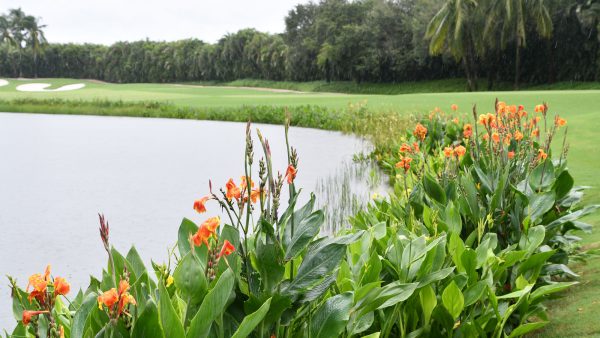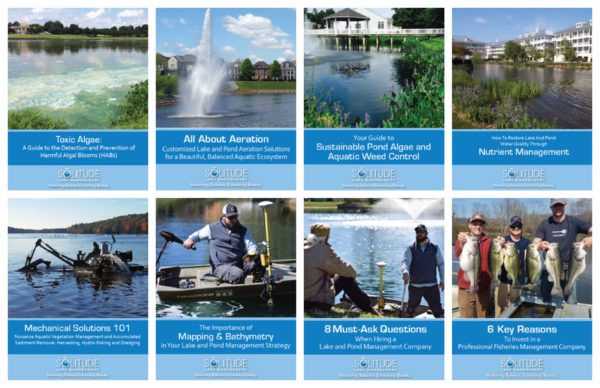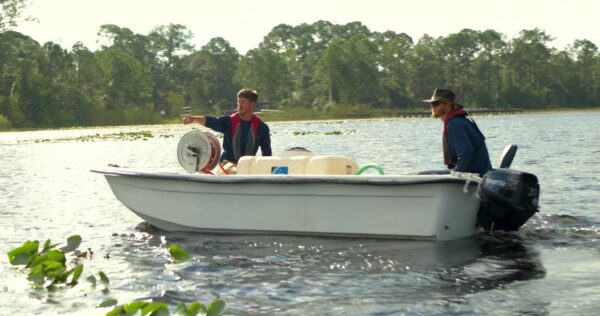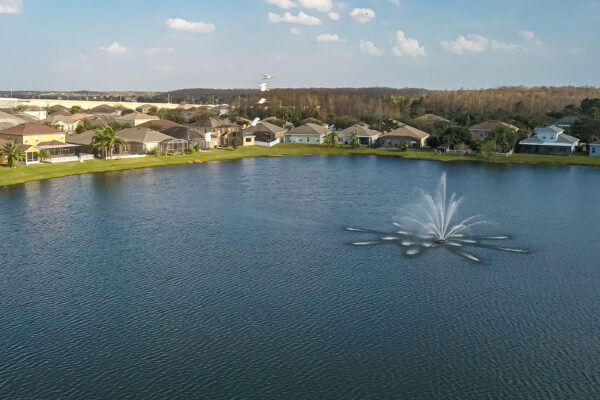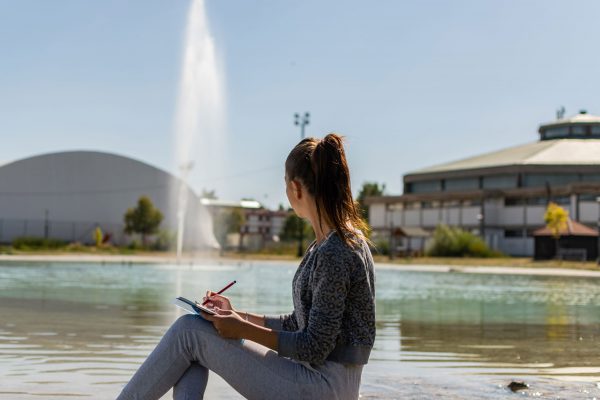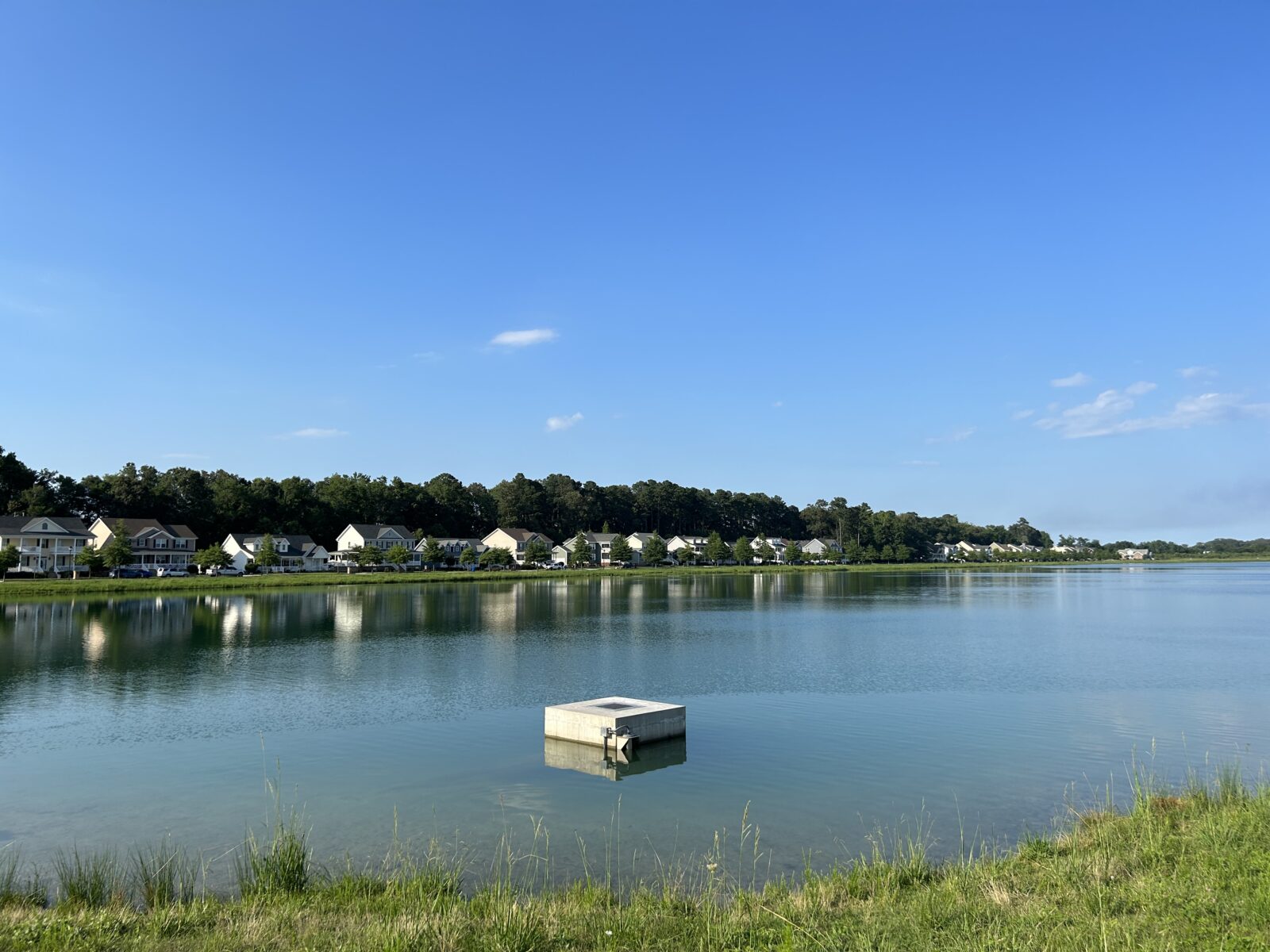
Stormwater management is a critical aspect of maintaining healthy communities and ecosystems. As urban areas expand and structures like roads and buildings increase, the natural flow of rainwater is disrupted. This can lead to stormwater runoff, which occurs when rainwater flows over these hard surfaces instead of soaking into the ground. This runoff can carry pollutants, sediments, and debris into local waterways, threatening water quality. Detention and retention ponds play a vital role in flood prevention and filtering pollutants before releasing the water back into the environment. Detention ponds temporarily hold stormwater runoff and release it slowly, while retention ponds are designed to store water permanently. Understanding these differences, their implications, and how to manage them is key to promoting sustainable water management practices in our communities.
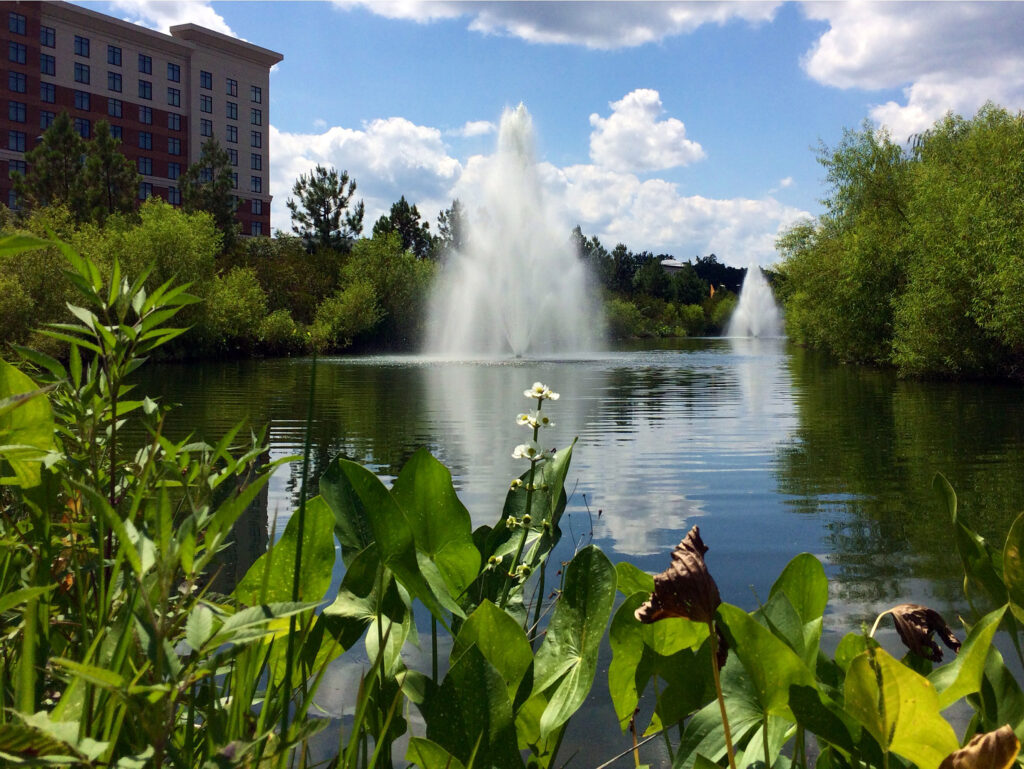
Retention Ponds
Retention ponds, sometimes called retention basins, are designed to permanently store or retain water. They are typically deeper than detention ponds and may also feature aesthetic elements such as fountains. Retention ponds can also provide valuable wildlife habitats, supporting various species while offering recreational opportunities if stocked with fish.
Retention ponds manage stormwater by storing water indefinitely, which allows it to slowly filter into the ground or evaporate over time. They typicallyhave an inlet, outlet, or emergency spillway features that prevent the water from overflowing and safely releasing water once it reaches a certain level. This process not only helps mitigate flooding but also improves water quality through natural filtration methods, as contaminants are filtered out as water passes through the pond. Additionally, they facilitate groundwater recharge, enhancing the local aquifer levels(is this true?). In terms of management, many retention ponds require routine algae and weed control, shoreline buffer management, aeration, and water quality monitoring, to name a few. In some cases, they may also need dredging to remove excess muck and sediment buildup to maintain the appropriate depth and volume for water storage, for compliance reasons.
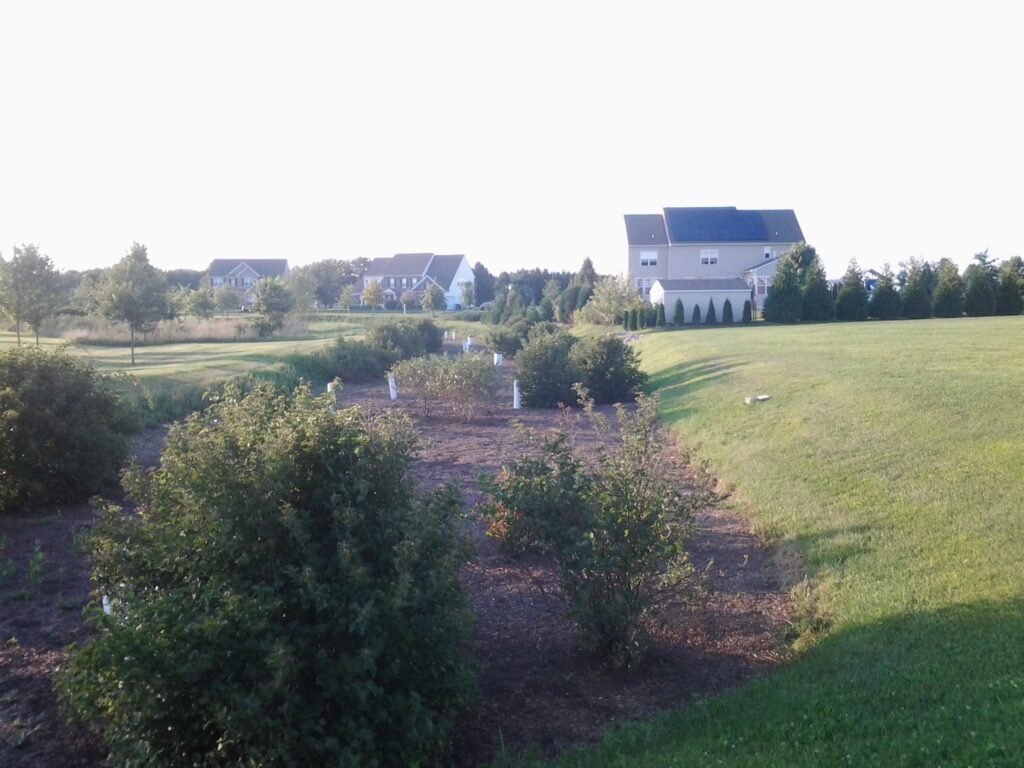
Detention Ponds
Detention ponds, also known as drainage ponds or detention basins, are engineered facilities designed to temporarily store and gradually release stormwater. Detention ponds are commonly utilized in urban and suburban areas where impervious surfaces can lead to increased runoff. These ponds are typically shallower than retention ponds and primarily focus on flood control and filtering pollutants. They manage stormwater by capturing water after rainfall events, allowing it to flow into the pond through the inlet. This stored water is then released at a controlled rate through the outlet structure, which helps minimize downstream flooding and reduces the risk of erosion and water quality degradation in nearby waterbodies. Additionally, some detention ponds may have vegetation to help absorb the water and safely release it back into the ground. When it comes to managing a detention pond, aquatic solutions like algae and aquatic weed control or aeration are not needed. However, it’s important to manage any vegetation to ensure it doesn’t become overgrown, limit water storage capabilities, or inhibit water flow. Over time, as muck and sediment build-up from stormwater runoff, dredging may be required to restore storage capacity.
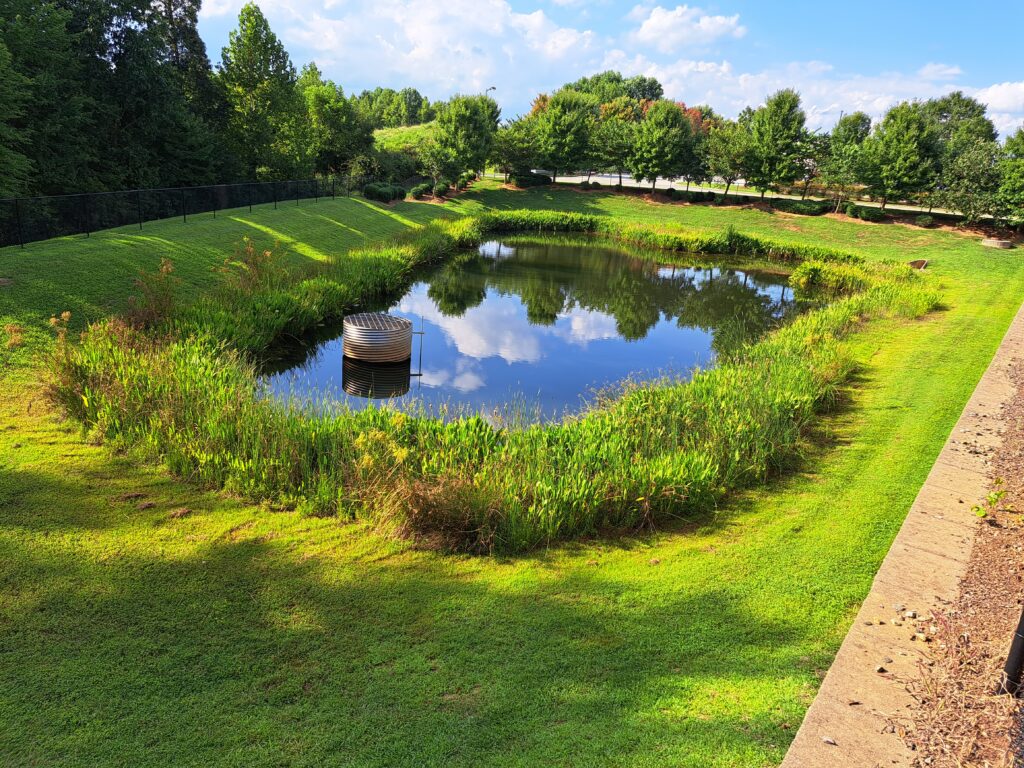
Key Differences Between Retention and Detention Ponds
When it comes to retention vs detention ponds, each waterbody has key differences in its design and function. Retention ponds are designed for permanent storage of water, allowing it to remain on-site indefinitely, while detention ponds are intended for temporary storage, holding stormwater only until it can be slowly released. In terms of depth, retention ponds are typically deeper than detention ponds, which are generally shallower to facilitate quick drainage. The water levels in retention ponds maintain a relatively constant state, whereas detention ponds experience significant fluctuations based on rainfall events and the subsequent release of water.
Another key difference between detention vs retention basins is their function. The primary function of retention ponds centers around improving water quality through natural filtration and allowing pollutants to settle, while detention ponds primarily focus on flood control, managing the flow of stormwater to prevent downstream flooding. However, they still filter sediments and other pollutants before water is released. Additionally, retention ponds often support more diverse wildlife habitats due to their permanent water presence and shoreline plant growth, whereas drainage ponds are less conducive to wildlife because their water levels and flow can change.
The Importance of Managing Stormwater Management Facilities
Effective management of stormwater facilities begins with establishing an annual inspection program. Conducting an annual inspection is not just advisable; it is often a requirement at the local or state level. In recent years, new legislation has strengthened the National Pollutant Discharge Elimination System (NPDES), making compliance even more essential for property owners and managers. If left unmanaged, stormwater pond owners or managers could face citations and possibly heavy fines.
It’s recommended to have a trained aquatic specialist regularly inspect your stormwater pond system to identify any potential issues that could affect the system’s functionality or result in compliance problems. Stormwater runoff, for instance, can cause shoreline erosion, leading to accelerated sedimentation and damage to inlet and outlet structures. Regular inspections allow owners and managers to detect signs of erosion or sedimentation early, enabling them to develop a long-term management plan that aligns with their goals and budget.
Choosing The Best Stormwater Management Program
Stormwater management can be difficult, and it’s important to keep your retention or detention pond functioning properly to avoid flooding, property damage, and potential fines. SOLitude’s aquatic experts can help you properly maintain your retention or detention pond, ensuring its functionality, regulatory compliance, and protection of local ecosystems. Contact us today to start building your stormwater management program.
Maintain Beautiful Water
Contact Our Lake Management Experts
Call us at 888-480-5253 or complete the form below to connect with an aquatic management expert.
SOLitude Lake Management is a nationwide environmental firm committed to providing sustainable solutions that improve water quality, enhance beauty and preserve natural resources.
SOLitude’s team of aquatic scientists specializes in the development and execution of customized lake, stormwater pond, wetland and fisheries management programs. Services include water quality testing and restoration, algae and aquatic weed control, installation and maintenance of fountains and aeration systems, shoreline erosion control, muck and sediment removal and invasive species management. SOLitude partners with homeowners associations, golf courses, private landowners, businesses and municipalities. SOLitude Lake Management is part of Rentokil, a leading business services company, operating across the United States, Canada and Puerto Rico.
For more information, visit SOLitude Lake Management at solitudelakemanagement.com, and connect on Facebook, LinkedIn, Twitter, Instagram and YouTube.

